Graham Reid | | 5 min read
Paul Weller: No Tears to Cry (from Wake Up the Nation, 2010)

Some careers get too long to be easily
digestible. Pity those doing the Paul McCartney reissue. His solo
career in pop-rock – we leave aside his classical projects and The
Fireman – stretches to almost 20 albums, and about twice that many
of you include Wings and live albums.
Even Paul Weller, who started his
recording career late in that decade when McCartney stepped away from
the Beatles, has been through two multi-album bands (the Jam and
Style Council, both with box sets collections) and has almost a dozen
albums under his own name.
So what might we expect from Weller
when he plays Auckland's Powerstation in late October 2010?
Material from the new album Wake Up the Nation certainly because Weller is a contemporary artist and not one coasting on former glories. In fact Wake Up the Nation was on the shortlist for a Mercury award this year along side Mumford and Sons, Dizzee Rascal, Villagers and others half his age. (They lost out to the XX.)
So it would be unwise to turn up to the
Powerstation expecting him to play In the City off the Jam
debut album, or something cool and European by the Style Council.
For two decades as a solo artist the
Modfather, as Weller is known, has explored an almost bewildering
array of musical genres.
Just before the release of his 22
Dreams album in 08 he bannered it by saying, "it takes in
soul, rock'n'roll, there are some folky moments, some psych bits, a
classical piece, some avant free form. There's a tribute to [jazz
pianist/composer] Alice Coltrane and a spoken-word piece called God
. . ."
If that sounded ridiculously ambitious,
the album proved he was one of the few who could pull something
coherent out of all that.
Weller's career began in the Jam as
power-pop with punk energy and one ear on the social commentary of
the Kinks' Ray Davies. By the close of the Jam he was exploring soul
music. The Style Council shifted the focus to Europe (sophisticated
jazz, soundtracks, cafe chic, and a political agenda) so by the time
of his solo career in 1990 he had plenty of colours to dip his brush
into.
That has made his career down the
decades one of the few worth following, and you don't need uber-fan
Noel Gallagher to tell you that.
Wake Up the Nation – his 25th
studio album – is typically diverse. As Mojo magazine noted
of its short sharp tracks the album is “a teeming, murky barrage of
squalling electronica, abrasive guitar and sweeping, epic piano
pieces, it manages to marry in a seamless and hugely satisfying way
Weller's impulse for the avant-garde – Stockhausen, Satie, John
Tavener, Debussy, Vaughan Williams – with the soulful bristling
Small Faces Mod-rock his fanbase so adores”.
In other words, Wake Up the Nation
is a thrilling implosion of raw rock and pop, with some arty
dillydallying around the edges just to keep you on your toes. He
sounds like the late Willy DeVille on the soulful No Tears to Cry
and Andromeda is soaked in Beatles/ELO psychedelics.
Interestingly enough, at this time in
his career Weller – now 52 – is also being compared with himself:
in his music you can tick off influences, but sometimes they are the
Jam (Jam bassist Foxton appears on Wake Up the Nations' Fast
Cars/Slow Traffic) and the Style Council.
Just as Radiohead around the time of OK
Computer looked to electronica for new possibilities, Weller too
keeps his ears open for other avenues of expression, whether they be
cutting edge classical music, the most daring end of Lou Reed and
David Bowie, classic soul music – or even his own illustrious past.
And that makes him a rare one, and a
man whose career is always worth following.
And Noel Gallagher didn't tell me to
say that.
THE MODFATHER MADE MANAGABLE
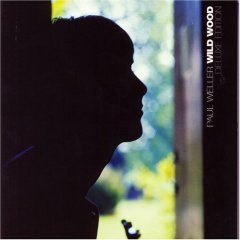 Wild Wood (1993): His second
solo out was an exceptional meltdown of soul, pastoral folk, feisty
power-pop, a beautiful ballad for his young son . . . He'd been
listening to Van Morrison as much as questioning his own relevance to
the Britpop generation. He fronted up, case closed. Essential Weller and an Essential Elsewhere album (see here).
Wild Wood (1993): His second
solo out was an exceptional meltdown of soul, pastoral folk, feisty
power-pop, a beautiful ballad for his young son . . . He'd been
listening to Van Morrison as much as questioning his own relevance to
the Britpop generation. He fronted up, case closed. Essential Weller and an Essential Elsewhere album (see here).
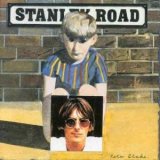 Stanley Road (1995): With a
title which nods to the Beatles' Abbey Road (Stanley Road was
where he grew up) and cover art by Peter Blake (who did the Beatles'
Sgt Pepper), this third solo album had everything in alignment
and the guests included Noel Gallagher, Steve Craddock of Ocean Color
Scene and Steve Winwood. Not many could pull off a version of Dr
John's New Orleans voodoo-funk Walk on Gilded Splinters.
Weller did that . . . and more.
Stanley Road (1995): With a
title which nods to the Beatles' Abbey Road (Stanley Road was
where he grew up) and cover art by Peter Blake (who did the Beatles'
Sgt Pepper), this third solo album had everything in alignment
and the guests included Noel Gallagher, Steve Craddock of Ocean Color
Scene and Steve Winwood. Not many could pull off a version of Dr
John's New Orleans voodoo-funk Walk on Gilded Splinters.
Weller did that . . . and more.
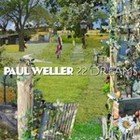 22 Dreams (2008): With 21 songs
(the other was the story on the cover) this was a lot of Weller to
assimilate, especially given all those styles he brought to bear. But
taken in smaller doses the depth of the writing becomes apparent . .
. and not many could have Gallagher, Robert Wyatt, Graham Coxon of
Blur and other luminaries to bring home everything from psychedelic
rock to gentle folk.
22 Dreams (2008): With 21 songs
(the other was the story on the cover) this was a lot of Weller to
assimilate, especially given all those styles he brought to bear. But
taken in smaller doses the depth of the writing becomes apparent . .
. and not many could have Gallagher, Robert Wyatt, Graham Coxon of
Blur and other luminaries to bring home everything from psychedelic
rock to gentle folk.
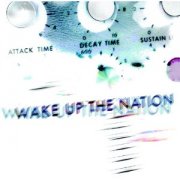 Wake Up the Nation (2010): No
one would accuse Weller of lacking ambition but this one does seem a
little erratic on the first couple of plays. But it gives itself up
over time: Ziggy-Bowie, psychedelic Beatles, soul-funk and
electronica are all part of the mix here, and the centrepiece Trees
is a Who-like four-minute rock-opera reflecting on life. Aging and
death was on Weller's mind, but not in the music.
Wake Up the Nation (2010): No
one would accuse Weller of lacking ambition but this one does seem a
little erratic on the first couple of plays. But it gives itself up
over time: Ziggy-Bowie, psychedelic Beatles, soul-funk and
electronica are all part of the mix here, and the centrepiece Trees
is a Who-like four-minute rock-opera reflecting on life. Aging and
death was on Weller's mind, but not in the music.
An enjoyable
homework lesson in advance of his shows.

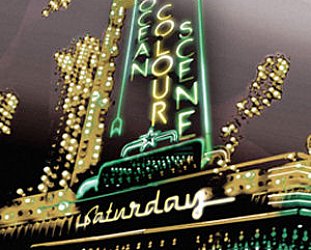
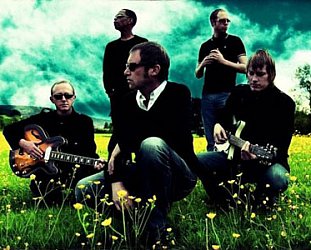



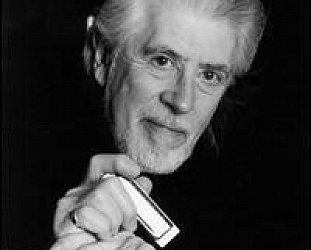
The Riverboat Captain - Oct 26, 2010
Er, well.. he seems to be doing a choice selection of old stuff along with the new, so I'm interested to see what he comes up with on Sunday night. The Sydney set list a couple of days ago had Shout To The Top (!), That's Entertainment, Start, Pretty Green, Malice and he's also done Art School and Scrape Away fairly recently.
Savepost a comment